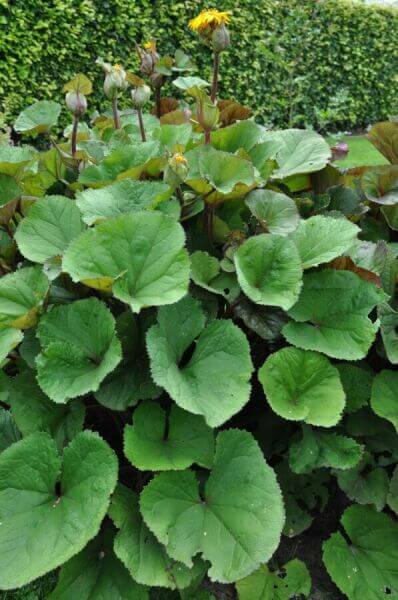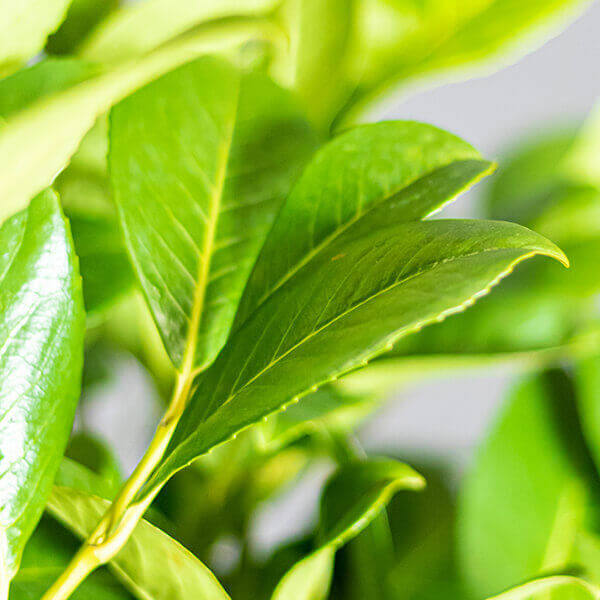Evergreen Hedge Plants For Year-round Greenery
Evergreen Hedge Plants For Year-round Greenery
Blog Article
Hedge Plants For Low Maintenance Gardens
Enhance your garden's allure with lush hedge varieties such as Yew (Taxus), Thuja, Laurel, Photinia, and Bamboo, commemorated for their structural integrity and ecological advantages.
Yew and Thuja offer evergreen protection and winter durability, while Laurel uses rapid development and broad, fragrant leaves.
Photinia includes seasonal charm with its dynamic red foliage, and Bamboo provides a low-maintenance, serene ambiance.
These hedges enhance air quality, reduce noise, and produce tranquil, personal areas.
Proper planting, spacing, and upkeep make sure vigorous growth and environmental consistency.
Explore how these lush varieties can raise your garden's beauty and well-being.
Secret Takeaways
Change Your Garden With Lush Hedge Ranges
- Select Yew for its dense, evergreen growth and unparalleled durability.
- Choose Laurel for its quick development and broad leaves, making sure quick personal privacy.
- Pick Photinia for its lively seasonal foliage, which turns a striking dark red.
- Utilize Bamboo for a low-maintenance, winter-hardy hedge with aesthetic appeal.
- Space plants 2-3 per meter and prune routinely for ideal growth and health.
Popular Hedge Plants
When changing a garden with rich hedge varieties, it's necessary to consider popular hedge plants such as Yew, Thuja, Laurel, and Photinia due to their distinct qualities and benefits.
Yew (Taxus) is highly esteemed for its longevity and dense, green growth, making it a prime choice for enduring landscapes.
Thuja is kept in mind for its evergreen foliage and robust winter season strength.
Photinia includes seasonal vibrancy with red leaves that darken with time, developing vibrant visual appeal.
Laurel provides fast growth and fragrant, broad leaves, perfect for fast personal privacy.
In Addition, Bamboo is an exceptional option for ambiance, using a low-maintenance, winter-hardy alternative that improves the garden's visual with its stylish, swaying canes.
These selections cater to a variety of horticultural requirements and choices.
Benefits of Garden Hedges
Garden hedges use a plethora of advantages, making them a valuable addition to any landscape. These natural barriers are cost-effective to carry out and supply considerable wind protection, boosting air flow and contributing to sound reduction. The dense foliage of hedges like Thuja and Beech makes sure privacy by blocking exposure, creating a secluded and tranquil environment.
Hedges also play an essential role in microclimate guideline, providing a steady environment that cultivates plant growth and decreases temperature variations. Their complex leaf structures filter pollutants, enhancing air quality and contributing to a much healthier garden ecosystem.
Furthermore, hedges excel in sound reduction, taking in and deflecting acoustic waves to lower ambient noise levels. This double functionality of offering both visual and acoustic privacy boosts the general tranquility and visual appeal of any garden.
Planting and Maintenance Tips
For an effective hedge, precise preparation of the planting location is crucial. Guarantee the soil has correct pH and drainage to support strong root development.
Area the plants properly for the chosen species. Water the hedge regularly throughout its initial growth stage, adjusting as required with seasonal modifications.
Implement a systematic insect control and illness avoidance strategy, using chemical or natural treatments when necessary. Regularly examine for aphids, mites, and fungal infections.
Apply mulch to keep moisture and suppress weeds. Seasonal pruning promotes dense development and air circulation, necessary for plant health.
Following these guidelines will help you cultivate a dynamic, well-maintained hedge that enhances the charm of your garden.
Spacing and Cutting Standards
Spacing and Cutting Standards
Correct spacing and trimming are crucial for cultivating healthy, visually appealing hedges. Sufficient spacing guarantees each plant receives enough nutrients, light, and air flow.
Follow these standards for optimum hedge upkeep:
- Spacing: Position hedge plants 2-3 plants per meter to motivate robust development.
- Pruning Methods: Routine pruning is vital for preserving preferred hedge height and shape. Trim new growth in summer and cut down older wood throughout winter season.
- Seasonal Care: Adjust trimming schedules and techniques according to seasonal requirements to guarantee plant health.
- Hedge Height: Routinely screen and trim to keep the wanted hedge height and accomplish uniform visual appeals.
Complying with these actions will ensure your hedge flourishes, boosting both the appeal and performance of your garden.
Selecting the Right Hedge
Choosing the Right Hedge
Picking the proper hedge involves evaluating aspects such as mature height, foliage density, and ecological durability. Successful hedge plant choice requires understanding each types' growth characteristics and site-specific flexibility.
For example, Yew (Taxus) uses outstanding durability and dense growth, while Thuja is significant for its winter season resilience. In addition, considering upkeep requirements is important; fast-growing species like Laurel or Privet need regular trimming, whereas low-maintenance alternatives like Bamboo or Ivy might be preferable for those seeking very little upkeep.
Ecological factors such as soil type, light accessibility, and moisture conditions must likewise direct the choice process. This cautious technique guarantees the picked hedges will thrive, providing both functional and visual benefits to the garden landscape.
Delivery and Planting Advice
To ensure your hedge plants prosper, they should be delivered by specialized couriers and planted quickly upon arrival.
Follow these necessary actions for successful planting:
- Soil Preparation: Improve the soil with raw material to improve drainage and nutrient material.
- Planting Depth: Create a trench twice the width and equal to the depth of the root ball.
- Watering Strategies: Water completely after planting, keeping the soil consistently damp however not filled.
- Mulching: Use a layer of mulch to maintain moisture and suppress weeds.
Customer Support and Service
Provided the important function of prompt assistance in horticultural pursuits, our customer support team is offered 6 days a week through telephone, e-mail, and social networks to use skilled suggestions and swiftly address any concerns. Their commitment to quick reaction times guarantees client complete satisfaction by fixing inquiries associated with plant health, optimum planting approaches, and upkeep schedules.

Reaction Time
Within 24 hours
Within 24 hr
This comprehensive support group, strengthened by an excellent 9.3/ 10 consumer ranking, highlights our dedication to improving the gardening experience for every single client.
Frequently Asked Concerns
How Long Does It Take for Hedge Plants to Establish?
Hedge plants typically require one to 3 years to end up being totally developed, with the specific period differing by species and growing conditions.
Efficient care during this crucial period is important for robust growth. Consistent watering, watchful weed control, and appropriate fertilizer application are pivotal in promoting strong root development.
For instance, fast-growing types like Laurel Additional resources might establish more quickly, while slower-growing varieties such as Yew may take longer. Thorough upkeep accelerates the establishment process, leading to healthy and dense hedges.
What Are the very best Hedge Plants for Privacy?
The concern of the very best hedge plants for personal privacy involves evaluating evergreen and deciduous options.
Evergreen hedges like Thuja, Laurel, and Cypress provide year-round protection, making sure continuous privacy.
On the other hand, deciduous hedges such as Beech provide seasonal privacy, shedding leaves in colder months.
Secret maintenance tips for personal privacy hedges include regular cutting, fertilizing in spring, and appropriate spacing-- typically 2 to 3 plants per meter.
In addition, consistent watering and diligent weed elimination are essential for promoting healthy, thick development.
Can Hedge Plants Attract Wildlife to My Garden?
Yes, hedge plants can attract wildlife to your garden by supplying important advantages like shelter, food, and nesting sites, thereby improving local biodiversity. Yew, holly, and laurel are outstanding for bring in birds, while ivy supports a variety of pests.
However, it is very important to note that there are some downsides, such as increased maintenance to handle bugs and regular maintenance. Carefully choosing and keeping hedge varieties can assist balance these benefits and downsides, eventually fostering a dynamic and sustainable ecosystem in your garden.
Are There Any Blooming Hedge Plants Available?
Yes, there are flowering hedge plants available that can enhance the charm of your garden.
For instance, Elaeagnus, also called Olive Willow, produces aromatic white flowers in the fall, including a touch of sophistication.
Photinia, another popular choice, showcases dynamic red leaves that develop into an abundant green, developing a dynamic visual effect throughout the seasons.
To guarantee these plants grow, it's important to practice proper pruning methods and seasonal upkeep, such as cutting brand-new growth in the summer and cutting back in the winter season.
These procedures will assist keep the health and visual appeal of your blooming hedges.
How Do I Prevent Insects in My Hedge Plants?
To prevent insects in hedge plants, utilize natural bug control techniques and keep proper hedge care. Introduce useful pests like ladybugs, which victimize damaging bugs, to create a balanced community.
Regularly inspect your hedges for signs of infestation and quickly eliminate any affected parts to prevent the spread. Ensure the health of your hedges by using well balanced fertilizers and supplying sufficient water.
Use mulching to keep soil wetness and appropriate spacing to decrease plant stress and promote robust development. These practices jointly assist in lessening insect issues and maintaining a healthy hedge.
Conclusion
In essence, picking the ideal hedge varieties such as Yew, Thuja, and Laurel can transform any garden into a serene sanctuary. These plants offer year-round greenery, boost aesthetic appeal, and offer useful benefits like noise decrease and wind security.
Proper planting strategies, precise spacing, consistent watering, and seasonal cutting are crucial for optimal development.
Trusted shipment services and expert consumer support make sure a smooth experience from purchase to planting, making it simpler than ever to raise your outdoor area.
Garden hedges offer a plethora of advantages, making them an important addition to any landscape. These natural barriers are cost-efficient to execute and supply considerable wind protection, improving air circulation and contributing to sound reduction. The dense foliage of hedges like Thuja and Beech makes sure privacy by blocking presence, producing a remote and serene environment.

Pruning Strategies: Routine pruning is vital for maintaining wanted hedge height and shape. Cut new development in summertime and cut back older wood during winter season.
Report this page